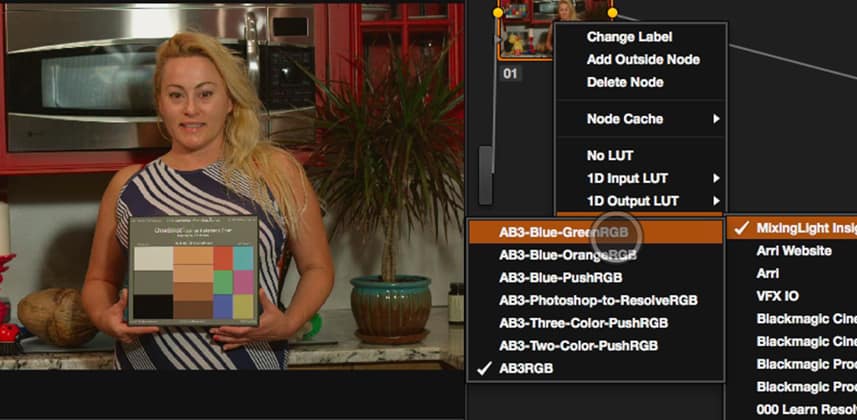| Series |
|---|
Do LAB LUTs exported from Photoshop work properly (in DaVinci Resolve)?
In an earlier Insight of this LAB color space series, a Member commented asking if we could export a LUT from Photoshop and use it in DaVinci Resolve (or any other app that accepts Look Up Tables)?
It’s an interesting question because LAB lets us make some pretty extreme corrections, some of which look like pure ‘secondary’ corrections—corrections where we isolate a single color and change it.
Typically, we want to avoid secondary corrections when using LUTs to share corrections because they tend to break (resulting in terrible looking images). But some types of isolations can be carried across by a LUT and so it’s a question worth exploring:
Do LAB LUTs from Photoshop work properly, even the extreme corrections?
Note: LAB LUTs don’t actually exist
We first need to define what I mean by ‘LAB LUT’.
The thing to remember, the LAB color space is a working color space – not a viewing color space. When we work in LAB our images eventually need to be converted out of LAB and back into RGB for our monitors to properly display the image. When we’re working in LAB, we’re always still viewing the image in RGB!
The exact same theory goes for the LUTs we create.
The LUTs you and I share with each other are always assuming RGB color channels. Our LAB manipulations are first converted back to RGB before the LUT gets exported. LUTs do not manipulate anything other than RGB values.
When I say I’m exporting a LAB LUT, what I’m saying is: I’ve made color manipulations in the LAB color space and exported a LUT… but the LUT itself is exported only AFTER the image has been converted back into RGB. It’s a LUT just like any other LUT.
But because LAB can manipulate images in ways that are impossible in RGB, the question becomes:
Can LAB corrections manipulate images in such a way that RGB LUTs can’t properly express those manipulations?
4 LAB Corrections, 4 LUTs and DaVinci Resolve
In this Insight I’m going to create four different corrections in Photoshop CC 2014—in the LAB color space—and I’ll export them as .cube files to use in DaVinci Resolve. I’ll also export out JPEGs of the images to import into the Gallery so we can compare the images created by Photoshop and look for any variances.
Each of the four LUTs will get more and more extreme as I try to ‘break’ the LUT and find the limits of the technology.
The Limits of this Insight
If you’ve been following this series, you know that I’m sharing my Insights on this topic as I learn about them. This means I’m very likely to change my mind, workflow or recommendations as I gain more experience working in this color space.
After watching this Insight, keep in mind – you may find a very particular situation in which my recommendation doesn’t hold true. That’s okay! Really. It’d be awesome if you shared this situation with the rest of us here in the comments.
And you can be sure, if I run across such a situation – I’ll be creating an Insight for all of us to learn.
Enjoy the video below, as we dig into the LAB / LUT workflow because remember:
This LUT workflow could open up the LAB color space manipulations for apps that don’t support LAB… watch to find out if that’s the case.
– pat
Member Content
Sorry... the rest of this content is for members only. You'll need to login or Join Now to continue (we hope you do!).
Need more information about our memberships? Click to learn more.
Membership optionsMember Login


